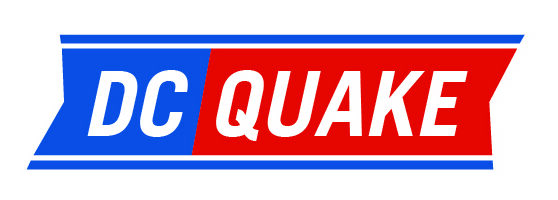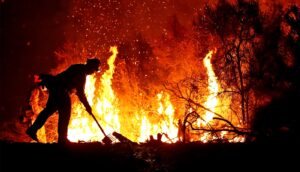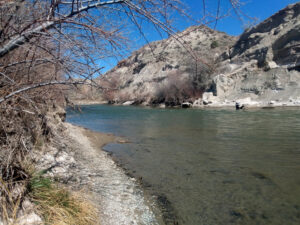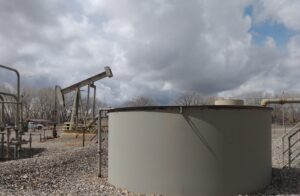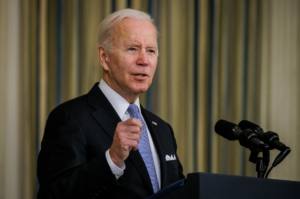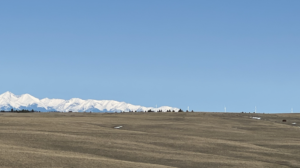What ‘waters of the U.S.’ means for Montana
5 min read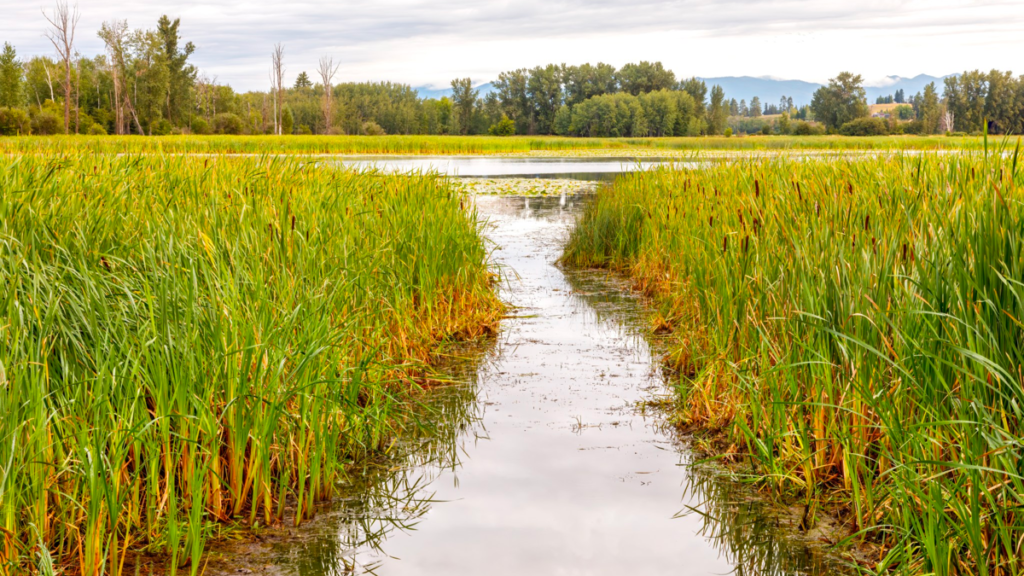
The Environmental Protection Agency is taking a close look at a 2020 rule that removed Clean Water Act protections from a significant number of waterways across the country, including a huge number of smaller streams and wetlands in Montana.
Earlier this month, the agency announced its intention to revise the rule’s definition of “Waters of the United States,” which outlines which water bodies fall under the regulatory purview of the Clean Water Act, the 1972 law that established pollution protections for America’s waterways. That definition is a moving target that is subject to judicial interpretations and directives from the executive branch.
Going back to the 1970s, the EPA and the Department of the Army have continually revisited the definition. In 2015, the Obama administration created a definition that applied to about 60% of the nation’s water bodies, including many smaller streams and wetlands.
Five years later, the Trump administration rolled that back by establishing the 2020 Navigable Waters Protection Rule, which outlined what is afforded protections (navigable waterways, tributaries of navigable waterways, certain lakes and ponds, and wetlands adjacent to other protected waters) and what’s not (groundwater, “ephemeral features” that hold water only seasonally, artificial lakes, and more).
In a June 9 press release about its intention to revisit the rule, the EPA said it was motivated to repeal the 2020 Navigable Waters Protection Rule after fielding concerns about “destructive impacts to critical water bodies.”
EPA Administrator Michael Regan said the agency found that the 2020 rule had led to “significant environmental degradation” and that it is committed to creating a “durable definition of ‘waters of the United States’” that takes into account Supreme Court precedent, lessons learned from previous rules and the input of stakeholders.
“Communities deserve to have our nation’s waters protected. However, the Navigable Waters Protection Rule has resulted in a 25 percentage point reduction in determinations of waters that would otherwise be afforded protection,” Acting Assistant Secretary of the Army for Civil Works Jaime Pinkham said in the statement. “Together the Department of the Army and EPA will develop a rule that is informed by our technical expertise, is straightforward to implement by our agencies and our state and Tribal co-regulators, and is shaped by the lived experience of local communities.”
WHAT RULE REVISION MEANS FOR MONTANA WATER BODIES
The environmental nonprofit Upper Missouri Waterkeeper says the 2020 rule removed Clean Water Act protections from as much as half of the state’s waterways. By EPA’s calculation, 54% of Montana’s streams have no other streams flowing into them, and 63% don’t flow year-round.
Upper Missouri Waterkeeper Executive Director Guy Alsentzer said those numbers mean that a new EPA definition will have an outsized impact in Montana, especially since Montana law says the state Department of Environmental Quality can’t implement regulations stricter than those established by the Clean Water Act.
“[The EPA] is going to go back, hopefully, to a science-based understanding of how do we protect the golden goose of Montana — all of our hydrologically connected waterways,” Alsentzer said.
He added that eliminating protections for seasonal waterways and wetlands lacking a “direct” surface connection to an adjacent waterway wasn’t a science-based approach to water protection. He’s hopeful that the new rule will provide more stringent protections even than those established under the 2015 rule, which he said was compromised by political calculations.
“These are the types of things that are the natural filtration systems and provide ecological benefits to all streams,” Alsentzer said. “If you’re connected, you should be protected.”
Montana Trout Unlimited was active in discussions with the EPA when the 2015 rule went into effect. David Brooks, Montana Trout Unlimited’s executive director, said the 2015 rule was established by a well-vetted process that incorporated both public participation and strong science, and he’s encouraged to see the EPA consider a return to that rule.
“It’s unequivocal that ephemeral streams and wetlands are connected to the water we drink, the water trout need, so I think it’s an easy thing to support for most people who actually pay attention to it,” Brooks said. “We’re not making new clean water and headwaters, so we really need to protect those that we have.”
Proponents and opponents of the EPA’s plan agree that a significant number of waterways in Montana will be impacted by a new definition, and that the current rule could benefit from more clarity.
Marty Malone, a Republican state representative from Pray, said the EPA’s planned rule revision is an example of federal overreach and described it as “Obama 2.0 — a little bit more, as Biden does on everything.”
“Every little frog pond is a water of the United States, so if you have to do anything with your frog pond or natural pond — clean it or anything — you’ve got to bend over for the EPA, so to speak,” he said.
Malone, a Paradise Valley rancher who irrigates crops with water from Mill Creek, said the prospect of new rule concerns him both personally and on behalf of his constituents. He said everything from cattail removal to bank stabilization could require a permit, which can get expensive for landowners, who have to pay a fee to help cover the EPA’s permitting costs.
The Montana Farm Bureau Federation said it was disappointed and surprised to learn of the EPA’s plans, having been assured by both Secretary of Agriculture Tom Vilsak and EPA Administrator Regan that a full rule repeal wasn’t in the works.
John Youngberg, the executive vice president of MFBF, said farmers and ranchers want clarity about the definition of regulated waterways and assurance that they don’t need a “team of consultants and lawyers every time they need to do an agricultural action.”
Youngberg said activities that might be subject to regulatory oversight under a new EPA definition include drilling, fence building, road building and tilling a field containing a low spot or swale. A rule that requires regulatory approval for earthmoving actions taken within 100 yards of a protected waterway would apply to a “big chunk of ground” in a state like Montana, he said.
“The 2015 rule included a lot of things that weren’t necessarily water all the time,” he added. “If snow melted and water ran down an area and then it dried up, that became a stream under the old rule.”
Tom France, a Democratic state representative from Missoula who serves on the Legislature’s Water Policy Interim Committee with Malone, said he’s hopeful the EPA’s new rule will take into account impacted communities, including agricultural interests.
“I know it’s a very contentious issue, and I think we should be taking every step we can to make it work in farm country and communities that have these wetlands and waterways that are tributaries to our rivers and streams,” France said.
A spokesperson for the Montana Department of Environmental Quality said the agency is reviewing the EPA’s new direction.
This article was originally posted on What ‘waters of the U.S.’ means for Montana
